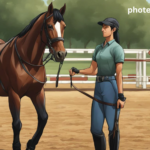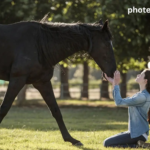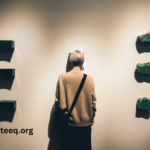Kids need to be supervised at all times when using playground equipment. They must also wear clothing that they don’t mind getting dirty or torn while playing, especially hooded sweaters and drawstring pants that can get caught on equipment and pose strangulation hazards.
In addition, children should not use equipment that requires climbing or jumping off of high levels. These activities can cause serious injuries like broken bones.
1. Age-Appropriate Playgrounds
Kids love to climb, and it’s a great way for them to build strength and coordination. It also helps them explore their surroundings from a different perspective, and can improve depth perception. But it’s important to make sure the equipment is age-appropriate, and that it doesn’t pose any safety risks.
For this study, researchers analyzed ten playgrounds in a district of a middle-sized German town. They used an audit instrument and the city’s playground manual to capture a wide range of environmental data, including spatial features of the play facilities. They then used negative binomial models to analyze the data.
The study found that children aged 0-14 years were more likely to use the Gross Motor Play zone in playgrounds that included a variety of facilities, naturalness, and paved areas, as opposed to those without these features. In addition, they were more likely to engage in functional, bike riding and rule-bound games in paved areas than in natural playgrounds.
2. Safety Measures
Playing sports is a great way for children to expend energy, build strength and coordination, and develop social skills. However, children often suffer injuries during play that can cause lasting effects.
Injuries can result from falling off playground equipment, contact with sharp equipment edges or surfaces, or entanglement in ropes and other objects. The most common injuries are head, neck and knee injuries. These injuries can be prevented by wearing proper protective gear, following sports safety rules and avoiding unsafe environments and equipment.
In addition to age-appropriate equipment, playgrounds should provide a soft surface under equipment to absorb impact and cushion falls. Ideally, this material should be a combination of pea gravel, sand and wood products. In addition, the site should avoid excessive sun exposure, which can make equipment hot and increase the risk of injury.
3. Space
In physics, the word “space” has many meanings. It can mean the distance between two objects, or it can refer to the physical area where orbital dynamics take over from aerodynamics. It can also refer to the area beyond Earth’s atmosphere, which is what astronauts experience when they go into space. It is also the area that is used to describe the universe. Universe Today has a number of great articles on the topic, including New Way to Measure Curvature of Space Could Unite Gravity Theory and Einstein’s General Relativity Tested Again, Much More Stringently. These articles will help you better understand what space is and how it works.
4. Cleanliness
Cleanliness is the state of being free from dirt, dust, stains, and other impurities. It involves maintaining high standards of personal hygiene and environmental tidiness to promote health and well-being. Cleanliness is also a social and cultural concept, valued for its aesthetic properties and perceived as an indicator of moral purity. Cleanliness is closely related to the concept of sanitation, which refers to the process of removing germs and other contaminants from food and water.
It is important to remember that a 안전놀이터 for babies and toddlers should be in an area where you can see them clearly. This means making sure that trees or buildings are not blocking your view. Also, be sure to supervise your children at all times. This will help prevent accidents and injuries.
5. Maintenance
Playgrounds provide a fun and healthy way for children to release energy, exercise, and socialize with friends. But, they can also be dangerous if children are not carefully monitored by parents or other adults. In fact, over 40 percent of playground injuries occur when children are not properly supervised. Before sending your kids to the playground, check for broken equipment, rust, and sharp edges.
Also, make sure that the ground is covered with loose fill such as sand, wood mulch, crumb rubber, or engineered wood fiber to cushion falls and prevent head injuries. Ensure that safety surfacing extends at least 6 feet in all directions around equipment and that spaces that could trap a child’s head, such as openings between ladder rungs or guardrails, are no more than 9 inches wide.





